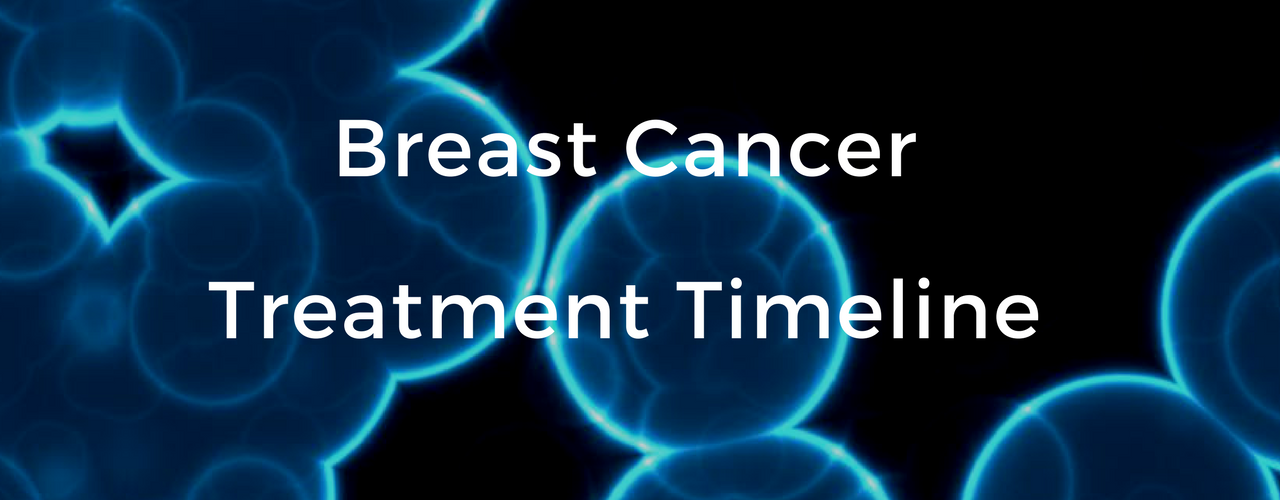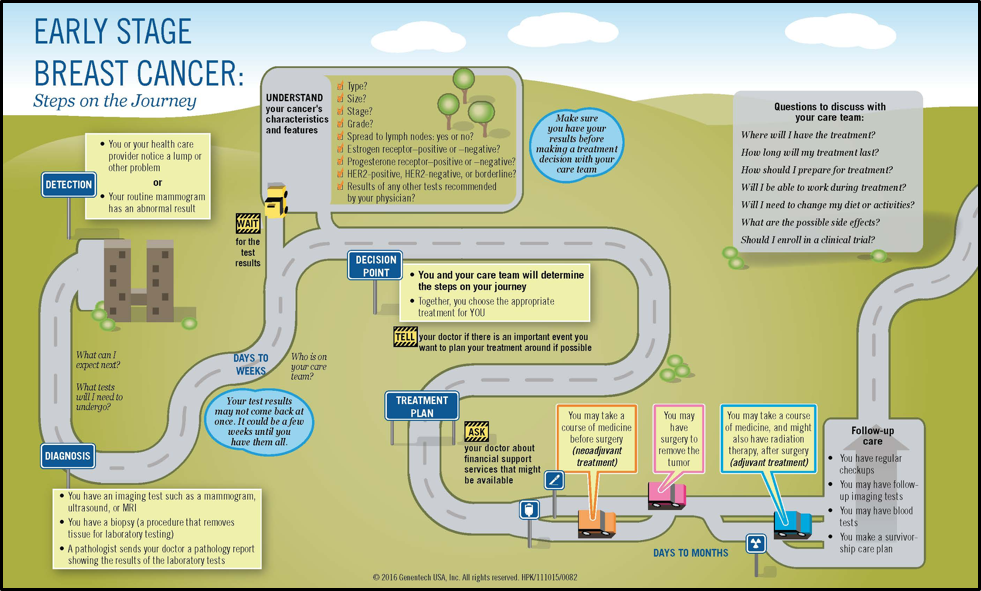You have plenty of time to make decisions
Making good decisions is the most difficult part of having breast cancer. You will feel pressed for time to learn everything and start your treatment as soon as possible. Time is usually on your side. You must work with your team to learn everything about your cancer and treatment options. We created the Breast Cancer School for Patients to quickly teach you to be your own expert in breast cancer. You will make better decisions being your own best advocate.
A few facts about time to treatment:
- The average time from the date of cancer diagnosis to the day of lumpectomy surgery is about 32 days. The average time to mastectomy surgery is about 40 days.
- It can take anywhere from 3 to 12 months from cancer diagnosis to complete your final treatments, and up to ten years if you need hormonal therapy. It is a marathon. Conserve your emotional and physical efforts for the challenges ahead.
Finding your breast cancer (1 – 3 weeks)
- Most small breast cancers are found on screening mammography and possibly by ultrasound or maybe a breast MRI. You may have detected your own breast lump and sought further help from your physician. The time to schedule a mammogram, have it performed, return for further breast imaging and then get the results can take days to weeks. Always ask to have your tests and appointments scheduled as soon as possible.
Getting a diagnosis: biopsy & results (2 – 14 days)
- Getting scheduled to have an image-guided breast biopsy by a breast surgeon or radiologist can vary. Most NAPBC accredited Breast Centers work quickly to schedule biopsies for those who might have a breast cancer. Our “Minimally Invasive Breast Biopsy“ lesson (here) outlines why needle biopsies are the standard of care.
- Make sure to ask (demand) that the physician who does your biopsy personally calls you with the results within a day or two. Call for your biopsy pathology results if you think there is a delay.
My pathology report: (3 – 14 days)
- Ask for a copy of your initial biopsy report that will be available in 2-3 days.
- Ask for a copy of your final pathology report with your receptor results.
- Our courses on “My Pathology Report” and “My Receptors” offer more details.
Surgery or chemotherapy first?
- Surgery is usually the first treatment for early-stage breast cancer.
- Most patients will not need chemotherapy.
- If you have Estrogen receptor negative (ER-) or a “HER2-Positive“ tumor, then you will likely need chemotherapy either before or after surgery. There are distinct benefits to “Neoadjuvant Chemotherapy” before surgery. Take our video lessons linked to these topics.
Is radiation needed? (4 – 6 weeks)
- Most patients that have a lumpectomy will need radiation.
- Whole breast radiation is the most common type and takes 4 to 6 weeks.
- Only a few patients that have a mastectomy will also need radiation.
Patient-Friendly References:
If you want to get deep into the details, this free 200-page pdf document (here) has guidelines to help clinicians to make treatment recommendations about nearly all aspects of breast cancer. You can easily register (here) as a non-professional to get access and more information about breast cancer. The National Comprehensive Cancer Network is the leading organization in developing clinical guidelines.




